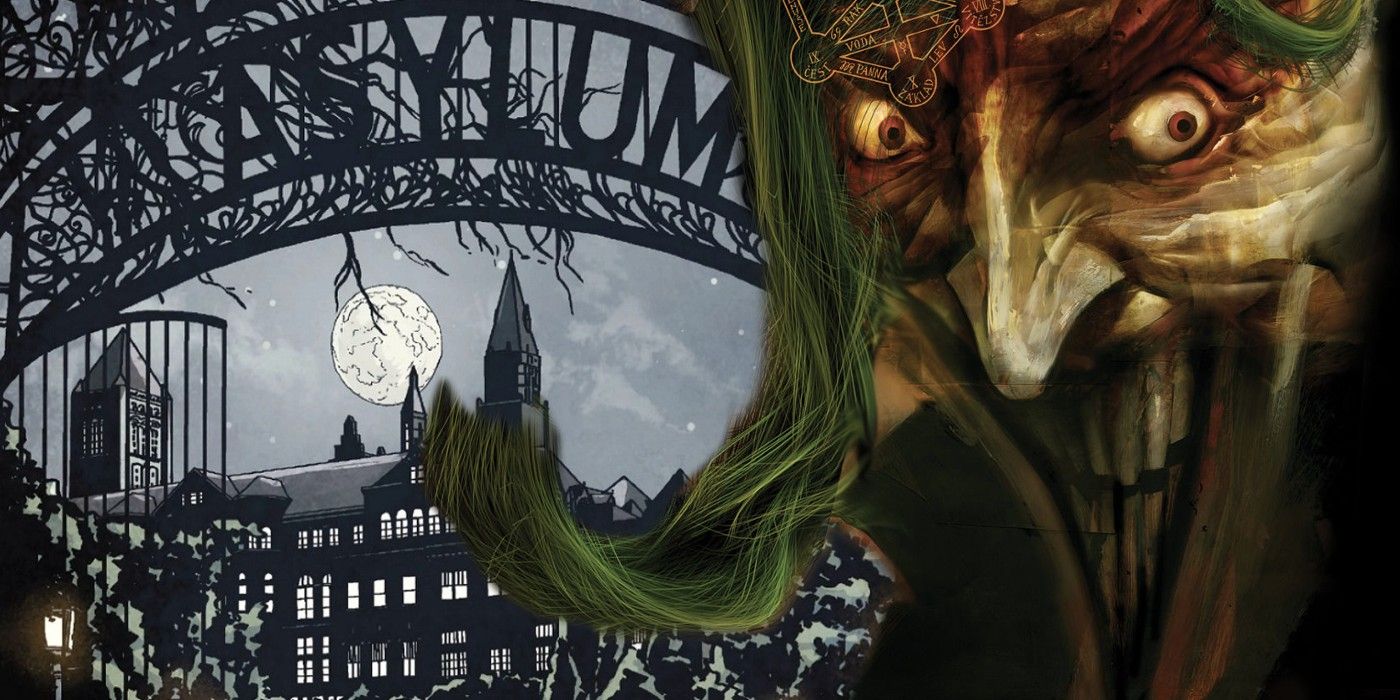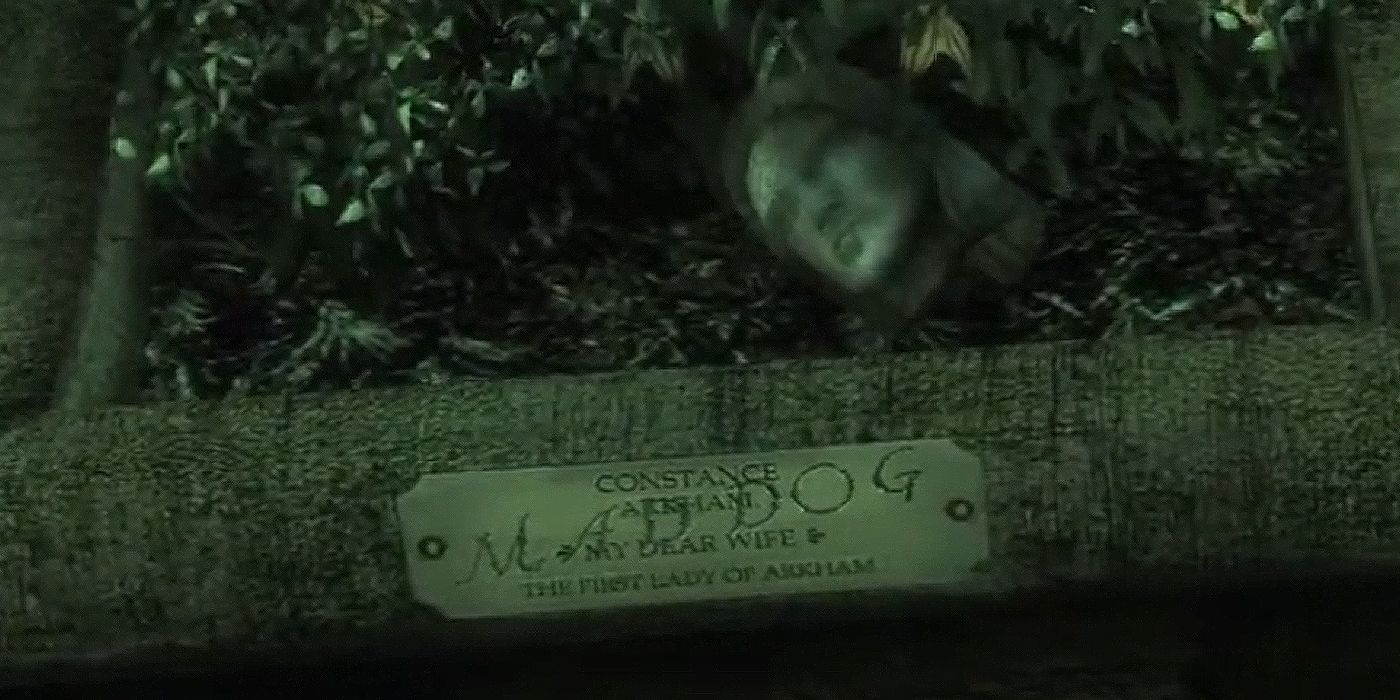No location in the history of Batman lore has become as pivotal to the overall DC Universe as Arkham Asylum. The asylum is most deeply associated with the Batman character, but since first debuting in the comics, Arkham has become linked to a number of other heroes and storylines outside of just the Bat-Family.
Arkham Asylum first debuted in 1974 and continues to be linked to numerous heroes and villains outside of Batman’s world. No supervillain super-prison equivalent in Marvel or DC has captivated readers so obsessively, even spawning a successful video game series based completely around Arkham Asylum.

For all the Arkham equivalent locations in comics culture (i.e. Marvel’s Raft), no place has consistently captivated or compelled readers quite like Arkham Asylum. To best understand what it is about Arkham that draws readers in, it’s important to first understand the asylum’s humble beginnings in DC canon.

Related
Batman is to Blame For Arkham Asylum Being So Terrible
Batman has done his best to protect Gotham City and get his villains the help they need, but the choices he’s made might have dark consequences.
Origins of Arkham Asylum
Panels from Batman #251 and #258
“Arkham” was officially introduced into DC canon as a name in 1974’s Batman #258 by Dennis O’Neil, Irv Novick, Dick Giordano, and Ben Oda. In a story showcasing Two-Face’s breakout, the institution is referred to as Arkham Hospital (“a polite name for an asylum,” the comic notes). The facility was referenced previously when The Joker becomes the first inmate to escape from it, but it was not referenced by name. In Batman #251 by Dennis O’Neil and Neal Adams, Batman references that Joker escapes from “the state hospital for the criminally insane.”
The mental hospital wouldn’t officially be namedropped as Arkham Asylum until 1980 in Batman #326 by Len Wein, Irv Novick, Frank McLaughlin, Adrienne Roy, and John Costanza. In due time, DC would flesh out the asylum’s history by revealing it was founded by Amadeus Arkham in 1921 once he inherited it from his mother. Arkham Asylum: A Serious House on Serious Earth would soon become the most definitive tale for readers’ understanding of the asylum, with Batman: The Last Arkham and Batman: Arkham Reborn also proving pivotal to the building’s history.
What Separates Arkham From Other Supervillain Prisons?
Arkham Asylum is Its Own Supervillain

There are several supervillain prisons and mental asylums housing the enemies of heroes in comic books, but there is only one Arkham Asylum. Often times, these supervillain prisons are depicted as running a tight operation, laced with high-tech holding cells and guards who are efficient enough to guard both the prison and its prisoners (even when the villains escape). Not Arkham Asylum. Arkham lavishes in housing a grimy, ragged odor as if it hasn’t been renovated in years. In that sense, creative teams can place Arkham in any time period and it would shift right in with the times.
Speaking of shifting, that’s another thing that separates Arkham from other prisons; it can often be treated as its own character. As if the inmates aren’t already insane, this is a prison that can drive people insane as easily as The Joker. The guards themselves struggle to endure Arkham as a mental prison, assuming they aren’t already disorderly in their own right. Even the aforementioned Amadeus Arkham and his nephew Jeremiah Arkham were both driven mad while running the asylum. No one comes out of Arkham unscathed, as if Arkham morphs its unruly mouth to all who enter, swallowing each inhabitant whole every time.

Related
Arkham Asylum’s Secret Meaning Proves Fans Misunderstand Its True Purpose
Joker invited Batman to Gotham’s notorious Arkham Asylum, not to imprison the Dark Knight but to free him from his self-imposed notion of sanity.
The History of Arkham Asylum
A Deeper Look at Arkham’s Past

The current canon of DC places Amadeus Arkham as the man who founded and ran the Asylum during the 1920s. As established in Arkham Asylum: A Serious House on Serious Earth, Arkham inherited the mansion previously owned by his late mother, Elizabeth Arkham, who battled mental illness. The years he spent caring for his mother during her struggles with mental health inspired him to become a psychiatrist at the Metropolis State Psychiatric Hospital. During this time, he took care of a patient named Martin “Mad Dog” Hawkins.
After the death of Elizabeth (a suicide that Amadeus begrudgingly assisted in), he turned her Mercey Mansion into a facility where those of a similar ailment could receive the help they needed. He’d also move into the Asylum with his wife Constance and daughter Harriet, which he’d soon come to regret as his former patient, Martin Hawkins, escaped from Metropolis State and broke into the mansion during its remodeling process. While Amadeus was away, Mad Dog did the worst things imaginable to Amadeus’ wife and daughter, going as far as to carve his name into Constance’s chest.
Mad Dog became Arkham’s first inmate, and after six months of treatment with no signs of improvement, Amadeus killed Mad Dog. Driven insane, Amadeus became an inmate in his own prison, where he’d die in 1963. Years later, his nephew Jeremiah Arkham took over as director. Initially, his intentions were good; taking steps to try to rehabilitate his patients and the facility (which backfired as all the renovations came crumbling down during Bane’s breakout in Knightfall), he’d eventually be driven insane himself. The apparent death of Batman being his last straw, Jeremiah Arkham would become the second Black Mask.
What Makes Arkham Asylum So Unique
It’s Constantly Evolving In Terms of Lore and Character

It was mentioned earlier that Arkham’s unique atmosphere comes from how it’s practically a character in itself. That is one reason why it is so unique as a location, but another aspect is how it can constantly be re-shaped in terms of lore. The same way that Arkham can shapeshift as a character, its lore can constantly be shifted to fit other characters without retconning the past that came before it. As a prime example, Green Lantern: Alan Scott reveals that the title character was once an inmate of Arkham Asylum.
The original Green Lantern has little to no relationship to Batman, yet he’s recontextualized to be a key part of Arkham’s history. Little things like that allow Arkham to be easily adaptable to any one character’s story. Arkham has such a rich lore in ways that not every supervillain prison is afforded that its history can be constantly built upon in new ways with new characters. Over the course of 50 years, Arkham Asylum has not only forever changed Batman lore, but continues to change DC history.

Batman
- Created by
-
Bob Kane
, Bill Finger - First Film
-
Batman (1989)
- Latest Film
-
The Batman
- Upcoming Films
-
The Batman Part II
- First TV Show
-
Batman 1960s
- Latest TV Show
-
Batman: The Brave and the Bold
- Video Game(s)
-
Batman: Arkham City
, Batman: Arkham Asylum
, Batman: Arkham Knight
, Gotham Knights
, Batman: The Telltale Series



